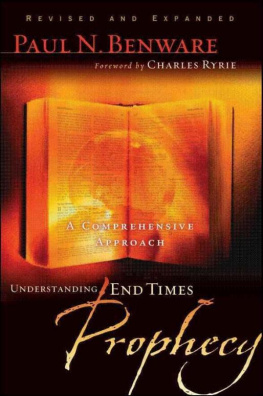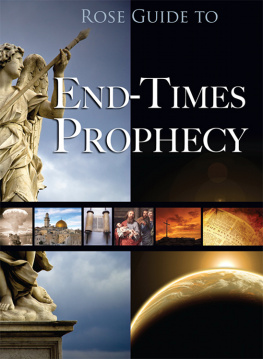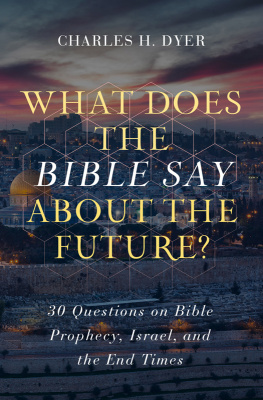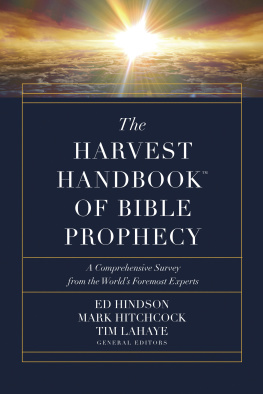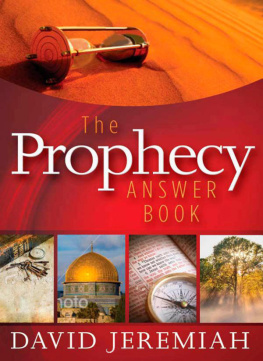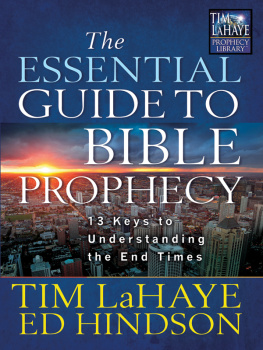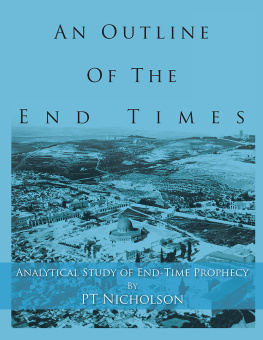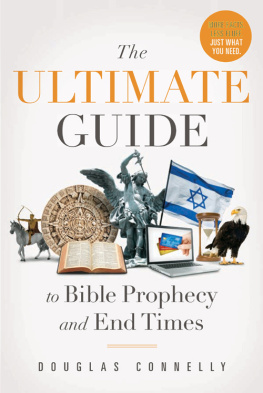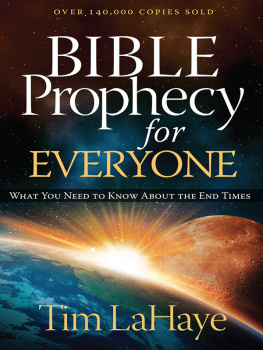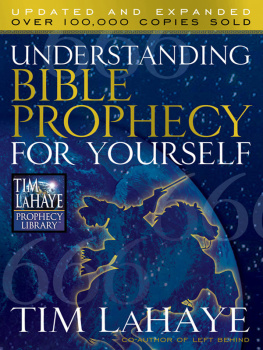THE PARTIAL RAPTURE VIEW
THE MIDTRIBULATIONAL RAPTURE VIEW
THE PREWRATH RAPTURE VIEW
Within the church, the great majority hold to either the pretribulation or posttribulation view of the rapture. It is often said that the "majority rules," but, although that may be true in politics, it is not necessarily true in theology. Having more people on your side does not validate a theological position. A widely held teaching must be evaluated on its biblical and theological merits.
This chapter will present the three rapture theories that would be considered minority views. Sincere people, who are committed to the Word and who love Christ's appearing, hold these positions; thus, we will discuss and evaluate the arguments for (1) the partial rapture view, (2) the midtribulational rapture view, and (3) the pre-wrath rapture view.
Distinctive Beliefs
Within the ranks of pretribulationism is the view that only some of the believers in the church will be taken in the rapture, which will be prior to the tribulation. This view, which was first articulated in the midnineteenth century, teaches that only faithful, spiritual Christians will be taken by Christ at the rapture: "Partial rapture teaches that only those believers who are 'watching' and 'waiting' for the Lord's return will be foundworthy to escape the terrors of the tribulation by being taken in the rapture." Those Christians who enter the tribulation period because they were unprepared (because of their worldliness and carnality) will either be raptured sometime during the tribulation or at its end or will entirely miss being raptured.
Partial rapture advocates believe that several groups of believers will be raptured during the tribulation. These are the ones who, after entering the tribulation, turn their lives around spiritually. The tribulation will be a time of purging these believers from their sin and carnality. After this they can be raptured. Being raptured, therefore, is seen as a reward for being faithful to Christ. These times of rapture are seen in Revelation 7:914; 11:2; 12:5; and 16:15. If a believer is not an "overcomer," that believer will not be raised until after the millennial kingdom, thus missing out on great blessing.

One example from Matthew illustrates the approach. In 24:4051, God's people are exhorted to "be on the alert, for you do not know which day your Lord is coming.... You be ready too; for the Son of Man is coming at an hour when you do not think He will" (24:42, 44). Those who choose not to be alert and watching will be dealt with severely (24:51). Partial rapturists have pointed out that the text speaks of two women who are at the mill; one will be taken and the other left (24:41). They argue that the word for "take" (paralambano) is also used in John 14:3 for the rapture and that Matthew 24 is teaching that one woman is taken up in the rapture and the other woman is left to go into the tribulation. On the surface they seem to have a point, but upon further analysis the text itself does not bear out this position.
First, the focus of Matthew 24 is on the period of tribulation itself and not on the time prior to the tribulation. The two women in the text are already living in the tribulation period, not in the church age looking ahead to the tribulation. Second, the context has to do with the nation of Israel in the end times, not the church. Third, the Greek word paralambano is not a technical term for the rapture. It is used in a variety of ways in the New Testament and cannot be made to stand for the rapture event. Fourth, the powerful removal of believers at the rapture is simply not found in this passage. The kind of event described by Paul in 1 Thessalonians 4 is not seen in this passage.
This text in Matthew 24 is dealing with those days immediately before Christ's second coming to the earth. Therefore, it is better to understand the text as teaching that the woman at the mill who was taken away was taken away in judgment, whereas the woman who remained was left to enter into the millennial kingdom.
An Analysis of the Position
The partial rapture view is based largely on Scripture portions that emphasize the need to be waiting and watching for the Lord's return. There is blessing and reward for those who are faithful. The primary passages used to present this position are Matthew 24:4051; 25:113; Luke 20:3436; 21:36; 1 Corinthians 9:27; Philippians 3:1012; 1 Thessalonians 5:610; 2 Timothy 4:8; Titus 2:13; Hebrews 9:2428; and Revelation 3:311. Although this view might initially seem to have significant support, a careful analysis of these Scriptures shows that such is not really the case. In referring to many of these passages, Walvoord comments,
In citing these passages, little distinction is observed between references to Israel and references to the church, and passages referring to the second coming of Christ to establish the millennial kingdom are freely applied to the rapture, or translation.... A study of these passages as interpreted by the partial rapturists will show the confusion of interpretation.
Aside from this general observation about the manner in which Scripture texts are approached, there are some specific reasons for rejecting the partial rapture theory.
First, this view has problems in relation to the doctrine of salvation. The believer in Jesus Christ is justified by faith, not by works. All aspects of our salvation are because of the grace of God. The translation and resurrection of believers is the future part of our salvation, and we receive that aspect of our salvation by God's grace and power and not by our good works. Yet, in the partial rapture theory, this aspect of our salvation is based on merit, at least to the extent that the future aspect of our salvation is postponed.
The translation and resurrection of the church is a part of its salvation provided by grace and is a reward only in the sense that it is a fruit of faith in Christ. To accept a works principle for this important aspect of salvation is to undermine the whole concept of justification by faith through grace, the presence of the Holy Spirit as the seal of God "for the day of redemption" (Eph. 4:30), and the entire tremendous undertaking of God on behalf of those who trust Him.
Second, this viewpoint contradicts the plain teaching of Scriptures that all believers are included in the rapture. In 1 Corinthians 15:51, Paul declares that "we shall all be changed." This rapture passage speaks of two categories of believers (the living and the dead) and states that all will be involved. There is no indication of exclusion. In 1 Thessalonians 4:1317, the apostle says that those involved in the rapture are the ones who are "in Christ," whether living or dead. Those who are raptured are those who "believe that Jesus died and rose again." He does not divide believers into the watching and not watching categories of the partial rapture position.
Third, this view of the rapture contradicts a correct understanding of a key rapture passage, 1 Thessalonians 5:910. As we saw in an earlier study of these verses, Paul teaches that the sovereign will of God is that His children not experience His wrath but, rather, that they obtain deliverance. Paul then gives them additional encouragement concerning their removal from the earth before the time of wrath when he says, "that whether we are awake or asleep, we may live together with Him." Those who are awake and those who are asleep have often been interpreted as living and dead believers. Paul, of course, does speak of these two categories of believers in relationship to the rapture event. In 1 Thessalonians 4, Paul contrasts living and dead believers and uses the Greek word

